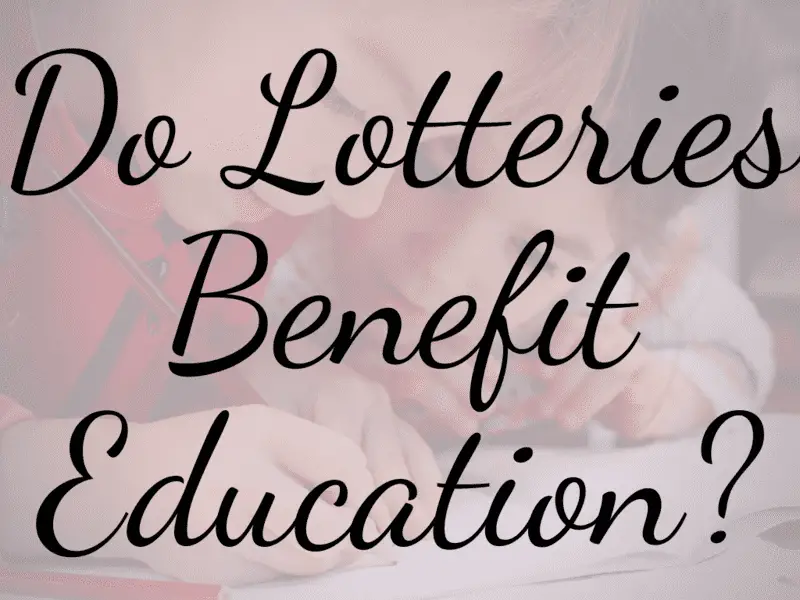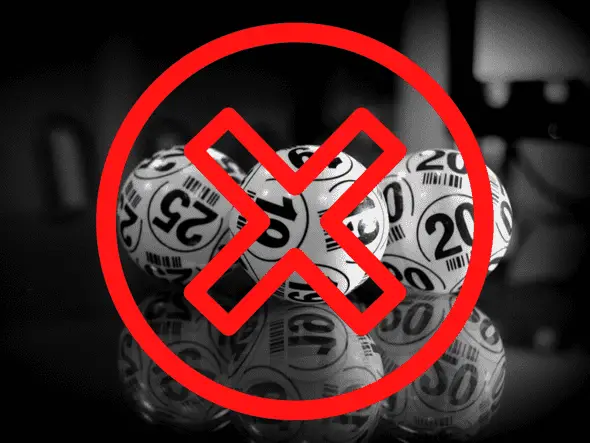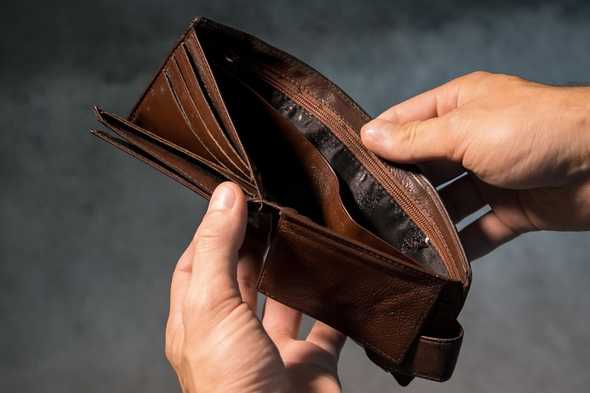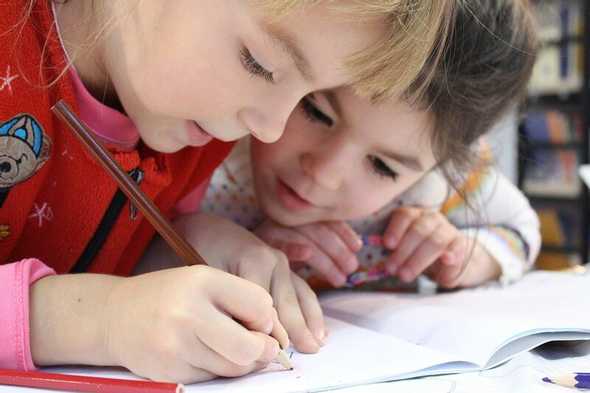Do Lotteries Benefit Education?
Lottery winners get millions of dollars for whatever they wish to spend on - be it flashy cars, houses, or dream vacations. But the states that hold the lotteries are winners, too. Lotteries will often donate money that contributes to the states’ funds for the year.
So, do lotteries benefit education? States that participate in lotteries make millions each year, and all will put some of the money towards public education. However, each state will allocate different amounts to be given to schools, and the rest will be divided among the rest of the state’s many needs.
Read on to learn more about how much states contribute to public schooling, why the idea of lotteries increasing education funds can be misleading, and the ways that different states allocate lottery money. This article also briefly explains different types of big lotteries that often rake in the most money, as well as the five states that don’t have any lotteries.
How Much Do States Put Towards Education?
The winner of the lottery, contrary perhaps to popular belief, does not win the entire pot of money. In fact, a percentage of the fund goes directly to the state.
The Mega Millions lottery and the Powerball lottery both give roughly 50% of the earnings to the person with the winning numbers and 50% to the state.
California has received close to twenty-five billion from lotteries. Virginia has received over five billion, and many other states have also reached nine-digit numbers from lottery donations.
How much people spend and how long the pot exists without a winning number being drawn will determine the actual amount that the state receives (as well as the amount the winner will get).
However, not all states put all the money towards public schools. States have many expenses relating to education, including paying the city and states’ administration, parks and recreation, and youth care.
With all of that using up lottery donations, the actual public schools themselves may not receive all the money. However, the funds are used for good and can help take care of other state needs.
What Do States Use the Money For?
This is a general overview, not a comprehensive list of all states. However, even with the eight states listed, you can see a pattern emerge. States typically give the largest portion of their lottery donations to K-12 public schools, even though the exact usage of that money is more difficult to discern.
Some states split up the money between many different good causes, such as environmental protection or social services, and some give the whole sum to their board of education.
Colorado
The Colorado lottery gives most of its funds not going to the winner to keeping up public parks and trails. Being home to a very outdoorsy population, preserving wildlife and outside spaces is very important. While they do give some lottery money for education, it’s less than a majority of other donating states.
Florida
Florida gives money to their Educational Enhancement Trust Fund, though the amount given varies. Their website reads: “Everytime you play the Florida Lottery, it’s a win for education!” The money is distributed to help public schools.
Washington
The Washington lottery gives millions to fund state programs, with the majority going towards public K-12 schools, scholarships for college, and early childhood education.
Oregon
While about a quarter of Oregon’s lottery money goes to public schools, they also allocate money to jobs, local watersheds, and even to gambling addiction support (possibly to counteract the negative effects a lottery might have on a gambling addict).
Virginia
Virginia didn’t always give funds to schools, but after citizens voted for it in the year 2000, they did. They say that their money “fills the gaps” for schools that don’t always get enough from state funding alone.
Idaho
The money given to Idaho public schools (over $200 million to date) mostly goes towards constructing and maintaining school buildings - not necessarily towards whiteboards and supplies, as their advertising used to suggest.
California
The California lottery has given a staggering $34 billion to education since they started donating in 1985. About 80% goes to K-12 schools, with the rest divided mainly between community and state colleges, as well as scholarships for students who need financial help.
North Carolina
North Carolina lotteries give about 35% of revenue to schools. When you look at the breakdown, only about 40% of that money goes towards instructional costs and construction of the schools, while the rest is for “non-instructional” costs.
New York
The New York Lottery claims that their “one and only mission” is to give aid to public K-12 schools. Without any other trusts supplied by their lottery, they have been able to donate over $68 billion since 1967 - a staggering amount.
Did State Lotteries Always Help Education?
 The short answer is no; state lotteries don’t always help education. However, most do, as educating children is one of the most popular and important uses of public funds. Additionally, the motivation for helping public schools by contributing lottery money typically doesn’t come from the lottery or the state’s politicians, but the citizens.
The short answer is no; state lotteries don’t always help education. However, most do, as educating children is one of the most popular and important uses of public funds. Additionally, the motivation for helping public schools by contributing lottery money typically doesn’t come from the lottery or the state’s politicians, but the citizens.
Citizens also usually vote on this - so it can take some time to implement the policy of contributing to education as the legislation works its way through the system.
Each state makes the decision in different ways and times in history. For example, Washington State’s citizens voted in the year 2000 to implement an education-funding policy for their lottery, while California had been donating lottery money to schools since 1985 - fifteen years earlier.
And, not all states prioritize funding education with lottery funds. Some, like Colorado, find that citizens benefit equally as much from nice outdoor spaces and a healthy environment.
Which States Do Not Have Lotteries?
Some states don’t have lotteries, meaning no funds can be allocated towards education. Some states have enough citizens that disagree with the principle of gambling due to religion, and some just don’t want to offer it or have enough people that find it morally wrong. While reasons vary, these states are in the minority of not having any sort of lottery.
- Alabama - no lottery for religious reasons (mostly Christian, and gambling is a sin)
- Alaska - Citizens and local government oppose
- Hawaii - Citizens and local government oppose
- Nevada - Casino industry won’t allow it, as they worry it will create competition for their industry.
- Utah - No lottery for religious reasons (mostly Mormon population and gambling is looked down upon)
Different Types of Lotteries
Powerball
The Powerball lottery is one of the largest in the US, with tickets sold in the 45 states that allow lotteries. A ticket is $2, and you chose a sequence of numbers, five of them from 1-69. Then you get an additional “Powerball number,” from 1-26. When the winning numbers are drawn, you can see how many match on your ticket. The winner will be the person with a complete match.
Though tickets are only two dollars, the pot can easily be into the millions or tens of millions. The odds of winning the jackpot are 1 in 292.2 million. But it can happen!
Powerball is one of the most popular lotteries, as well as one that will usually advertise to help schools if the state has decided to allocate its profits.
Mega Millions
To play this lottery, which is just as widespread at Powerball, players pick six numbers from 1-70 plus one more “Mega number” from 1-25.
Since the odds are lower when someone wins the jackpot (1 in 302 million), the pot is bigger and can be in the hundreds of millions. Tickets are also two dollars, and you have a 1/24 chance of winning some sort of prize.
Mega Millions is one of the largest contributors to state funds since it attracts so many gamblers and typically ends up with a huge pot of money. Mega Millions has also seen some of the largest jackpots in American history.
Lotto America
Lotto America is a lottery game popular in only 13 states - Idaho, Montana, North and South Dakota, Kansas, Oklahoma, New Mexico, Tennessee, West Virginia, Maine, Minnesota, Iowa, and Delaware.
Within those states, Montana uses profits for Stem Scholarships, and Oklahoma uses the funds to pay for teacher retirement, as well as K-12 education.
Most of the other states that play Lotto American just contribute some of the lottery’s profits to their state’s General Fund, which can be put towards education, as well as state upkeep.
How Much Actually Goes to Schools?
 The question of how exactly the money for K-12 public schools is used can be misleading. This Washington Post article found that the advertising and action of lottery money can be very different in reality.
The question of how exactly the money for K-12 public schools is used can be misleading. This Washington Post article found that the advertising and action of lottery money can be very different in reality.
Many lotteries have a motto relating to “help education!” or “pay for schools!” in order to encourage gamblers and to put a positive spin on the face of the game. However, the amount of money that goes to schools varies.
For one, each state will choose different percentages or amounts of money that education boards receive. Only about fifteen states choose to have all the profits (aside from public prizes) go to education. The rest will divvy it up between environmental causes, construction, and wildlife preservation, among other things.
Additionally, many states have restrictions on what the money can buy. The funds don’t go to chalkboards and pencils, but rather ”non-instructional support” or administrative costs. Another percentage of the cut goes to construction and maintenance.
After those other costs, a much smaller percentage than may be advertised is given for pre-kindergarten schools, scholarships for college, and teacher salaries.
Additionally, states often treat the lottery money as an income for the education fund, rather than extra money. Legislatures are allowed to use lottery money as state funding, rather than supplementing. For example, a CNN article found that after North Carolina devoted lottery profits to education, they cut their state funding by 12%.
And this pattern isn’t unique to North Carolina - states have many different needs that need money, and by swapping in some lottery money to fund schools, they freed up costs for other departments.
The money fills gaps in the system rather than building on top of a solid base. When all is said and done, the lottery fund, massive as it may seem, pays only for days or weeks of the school year. In this way, lottery profits really just help the state, rather than education specifically.
This isn’t to say that lottery money for schools is bad or unimportant - quite the opposite. Since public schools rely heavily on lottery money, the more they can get, the better. And not all states cut school funding quite so dramatically, meaning that lotteries can truly benefit the public school system.
On that note, the more money schools get to “fill in gaps,” the better chance they have to spend more per student - and many schools that benefit from the lottery have been able to increase overall spending, especially as need increases.
How Else Do Public Schools Get Money?
 Aside from lotteries, of course, public kindergarten through twelfth-grade schools get funding from the state. According to the US Department of Education, the ability and planning to fund education lies within each state - it’s a constitutional right. However, since free primary education is a core value in the US, the federal government does supplement states with extra money.
Aside from lotteries, of course, public kindergarten through twelfth-grade schools get funding from the state. According to the US Department of Education, the ability and planning to fund education lies within each state - it’s a constitutional right. However, since free primary education is a core value in the US, the federal government does supplement states with extra money.
So, where does the state get its money? Taxpayers. Through taxes, citizens as a whole pay hundreds of billions per year towards education. This applies to all citizens, whether or not you have a child in public school or not.
Congress does set a maximum, or “goal” for spending on education at a federal level, but rarely reaches those limits.
Why Do Schools Need Lottery Money?
Even though Americans value education, schools are always in need of more money. Teachers are paid wages that are sometimes enough to live comfortably - and sometimes not. According to Business Insider, the average salary for teachers in 2017-2018 was $60,500.
Studies have shown that an increase in teacher salary means students are academically better off. Why? Because higher wages increase applicants, which then creates competition, meaning that schools have a larger pool of teachers to choose from, ensuring they get more enthusiastic and qualified instructors.
Adding to that, when spending per student drops, so does the graduation rate. When schools have more money, they can build more classrooms and hire more teachers, meaning class sizes will decrease, and more individual attention can be spent on each student.
An increase in funding has been shown to especially help students from lower-income families. Extra attention and more money for training help with reading and math skills necessary to graduate. Additionally, lottery money is sometimes used for fee waivers for college-required standardized tests, helping students even beyond high school.
Additionally, reduced and free lunch, as well as support to cover expensive textbooks and field trips help lower-income students stay in school, thus increasing the graduation rate.
Finally, schools with less funding produce students who do worse academically, according to a fiscal analysis. If education is to be valued, then money needs to flow towards the public school system in the United States.
Lottery money does help with all of the aforementioned, but it could really help if it was supplemental in all states. However, at current levels, the donations to education by lotteries are generous.
Funding Inequalities in Schools - Can Lotteries Help?
Funding inequalities for schools in the United States is an issue that haunts a multitude of communities. There’s inequality between lower and higher-income neighborhoods, between majority white and majority non-white schools, and between states.
In states like Utah, Minnesota, and Ohio, the gaps between low-income and high-income schools are gaping, with the percentage of spending per student higher by double-digits for high-income kids.
Can lotteries help? Most likely, no. While lotteries do help by donating money, the gaps in spending are so large that the state would need to step in to close the gap. Additionally, since lottery money is divided between public schools in any state, allocations are about even.
Since all schools get a small boost from the lottery pot, no one lower-income school can “catch up” to the level of a higher-income school with the lottery money.
Again, however, the extra money never hurts, no matter what district a public school is in.
Conclusion
A percentage of profits made by lotteries are often donated to the state’s education program, which funds public K-12 schools, scholarships, construction, maintenance, and administrative costs.
However, there is debate over whether the lottery money is really adding to schools’ budgets, or just contributing the baseline need while states receiving this money cut replace typical funding with lottery funding.
Either way, lotteries often donate millions each year, with the largest contributors being Mega Millions and Powerball. Each state determines a different amount and location of the money received.
The bottom line is, the next time you buy a lottery ticket, it’s possible that the money you spend may help your state to fund education! A pretty good cause for only two dollars per ticket.







